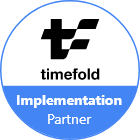Deck.gl Map Layers
Posted By : Ashutosh Singh | 24-Jan-2025
Google Cloud javascript ReactJS

Deck.gl is a powerful and versatile library for creating stunning visualizations on top of maps. It offers a wide variety of map layers, including heatmaps, point clouds, 3D objects, and more. This blog post will explore the capabilities of deck.gl map layers and how to integrate them seamlessly into Google Maps and Mapbox.
What are Deck.gl Map Layers?
Deck.gl is a JavaScript library specifically designed for rendering large-scale geospatial data on web maps. It leverages WebGL to deliver high-performance visualizations that can handle massive datasets efficiently. Deck.gl provides a rich set of built-in layer types, including:
- Heatmaps: Visualize the density of data points across a geographic region.
- Point Clouds: Render millions of data points as individual markers or clusters.
- 3D Objects: Create custom 3D shapes and integrate them into your map.
- Line Layers: Depict routes, paths, or network connections.
Polygon Layers: Fill geographic areas with color or patterns.
Benefits of Using Deck.gl Map Layers
Deck.gl offers several advantages for creating map visualizations:
- Performance: Deck.gl leverages WebGL for hardware-accelerated rendering, ensuring smooth and interactive maps even with large datasets.
- Customization: Deck.gl provides extensive customization options for styling and interacting with map layers.
- Versatility: The library supports a wide variety of layer types, enabling you to create diverse and informative map visualizations.
Open-Source: Deck.gl is an open-source library, allowing for free use and customization.
Integrating Deck.gl with Google Maps
While Google Maps doesn't natively support deck.gl layers, you can integrate them using a third-party library like react-map-gl. Here's a general outline of the process:
- Set up React Project: Create a new React project and install necessary dependencies, including
deck.gl,react-map-gl, and Google Maps JavaScript API. - Import Libraries: Import required components from
deck.glandreact-map-glin your React component. - Initialize Map: Create a
MapGLcomponent fromreact-map-gl, specifying the initial map view (center, zoom, etc.) and loading the Google Maps basemap. - Define Deck.gl Layers: Create deck.gl layer instances for your desired visualizations (heatmap, point cloud, etc.).
Render Layers: Use the
Overlaycomponent fromreact-map-glto render the deck.gl layers on top of the Google Maps basemap.
Integrating Deck.gl with Mapbox
Mapbox offers a more natural integration with deck.gl since both libraries share a WebGL foundation. Here's a simplified approach:
- Create Mapbox Account: Sign up for a free Mapbox account and obtain an access token.
- Set up Project: Create a new web project and include the Mapbox JavaScript library and deck.gl.
- Initialize Map: Use the Mapbox GL JS library to create a map instance, specifying the Mapbox basemap style and access token.
- Define Deck.gl Layers: Create deck.gl layer objects as described earlier.
Add Layers to Map: Use the
addLayermethod of the Mapbox map object to add your deck.gl layers to the map.
Conclusion
Deck.gl map layers empower you to create exceptional visualizations that enhance the storytelling capabilities of web maps. By integrating deck.gl with Google Maps or Mapbox, you can leverage the power of WebGL to bring your geospatial data to life. Remember to consult the respective documentation and explore code examples for a more comprehensive understanding of the integration process.
Additional Tips
- Explore deck.gl's documentation for detailed information on layer types, styling options, and advanced features.
- Consider using tools like Kepler.gl, a visual editor built on top of deck.gl, to simplify the creation of map visualizations.
- When integrating with Google Maps, ensure you comply with their usage guidelines and terms of service.
I hope this blog post provides a helpful introduction to deck.gl map layers and their integration with popular mapping platforms. With its flexibility and performance, deck.gl can transform your web maps into insightful and visually engaging experiences.






